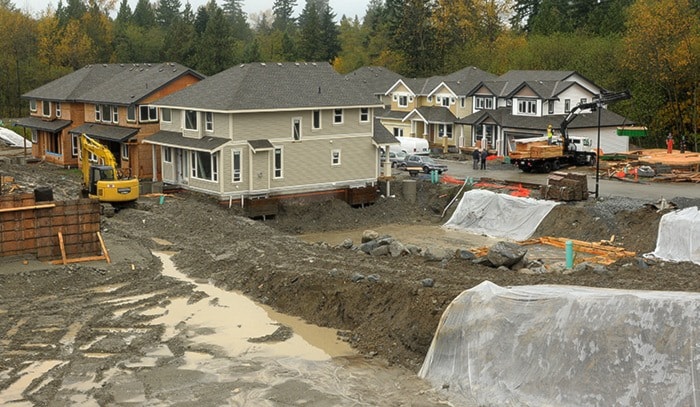Smaller lots, more houses, and more developer cash for amenities are slated for the Albion area, if a new bylaw gets through Maple Ridge council.
A public hearing was held on Tuesday evening in council chambers about a density bonus for land developers, which would include an amenities fee of $3,100 for every lot taking advantage of smaller minimum sizes. The money would be used for trails, parks and community gathering places.
Craig Ruthven went to the podium twice, saying he represented the group Our Neighbourhoods, which was formed a year ago to engage the public in development and planning issues, and address concerns about missing amenities.
Ruthven said he has conducted a survey showing 60 per cent of respondents either oppose or have serious misgivings about smaller lots. He said people have concerns about increased traffic in a congested area. He added that he personally finds it “concerning and disappointing,” that staff is raising the issue of density bonusing “at the 11th hour.”
Jackie Chow also expressed concerns about increased traffic. She characterized the Albion area as urban sprawl, in need of nearby schools, transit and shopping to serve residents.
She said the area is “100 per cent car dependent,” and increasing density without improving transit is out of synch with the district’s goal of reducing carbon emissions by one-third by the year 2020.
Raymond Nothstein of Wesbild Holdings told council the company supports the amenity fee, “if council and staff use this money to create something in the short term.”
Wesbild, which developed some 1,300 homes in the Foothills at Burke Mountain in Coquitlam, is to develop 46 lots in Albion. Nothstein said the company would take advantage of the density bonus, and pay the district $142,600 in amenity fees.
Randy Dick of Portrait Homes in Vancouver said the company also supports the incentives and fees as presented, but asked municipal hall to be more transparent, with specifics about what amenities it wants built in the area, and what the budget for them will be.
Dick also called for townhouse zoning to allow for even more density, to enable developers to provide more affordable townhouses.
Planner Lisa Zosiak said she understands that developers would like to know what the amenity fees would be used for, but that cannot be determined until the area is developed, and the total amount of funds is known.
The money will be put into an Albion Area Amenities Reserve Fund.
“What gets built depends on the amount in the fund,” Zosiak said.
The density bonus structure would apply only to lands within the Albion Area Plan. Existing base density would remain in place and continue to be an option for developers, without extra cost. The proposed bylaw says the Albion Area Plan strives to balance residential development with environmentally sensitive areas and diverse housing styles.
The area in question stretches from 240th Street as a western boundary, east to past 249th Street, and from Hill Avenue in the south, north to 113A Avenue.
The bylaw spells out that in zoning where the base density is a lot area of 2,000 square meters, the new density bonus would allow a minimum lot area of 557m.
To achieve this, the minimum lot width would be halved from 30m to 15m, and the lot depth from 40m to 27m.
In zones where the minimum lot size is 557 square metres, the density bonus would allow 371m square, with a minimum lot width of 12m and depth of 24m.
Other density bonuses for apartments and townhouses in the area are also spelled out.
The maximum increase in the number of lots that could result from new developments, mostly north of 108th Avenue, would be 280.
Nothstein said after the meeting that opportunities to build larger subdivisions like those in eastern Maple Ridge have become rare in the Lower Mainland.
“These sorts of large development areas don’t exist anymore,” he said. “There’s a bit of a sweet spot in Maple Ridge.”
Council will make a decision about the proposed planning changes at its Sept. 24th meeting.
Albion would be a test area, and the density bonus could be applied to future development in other areas.
